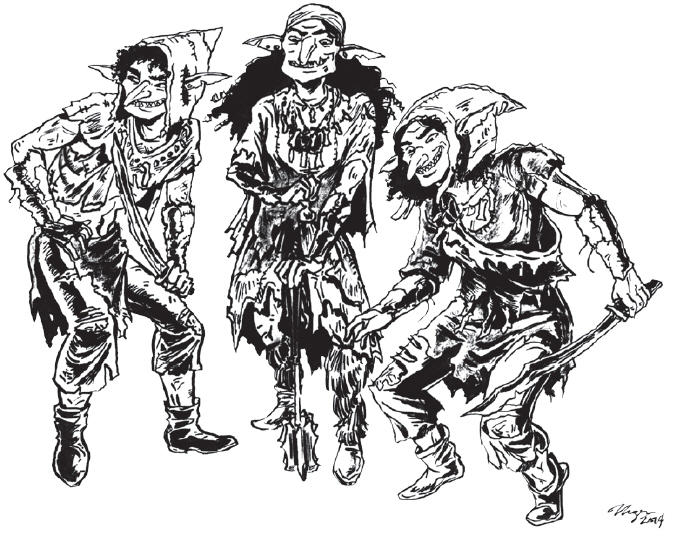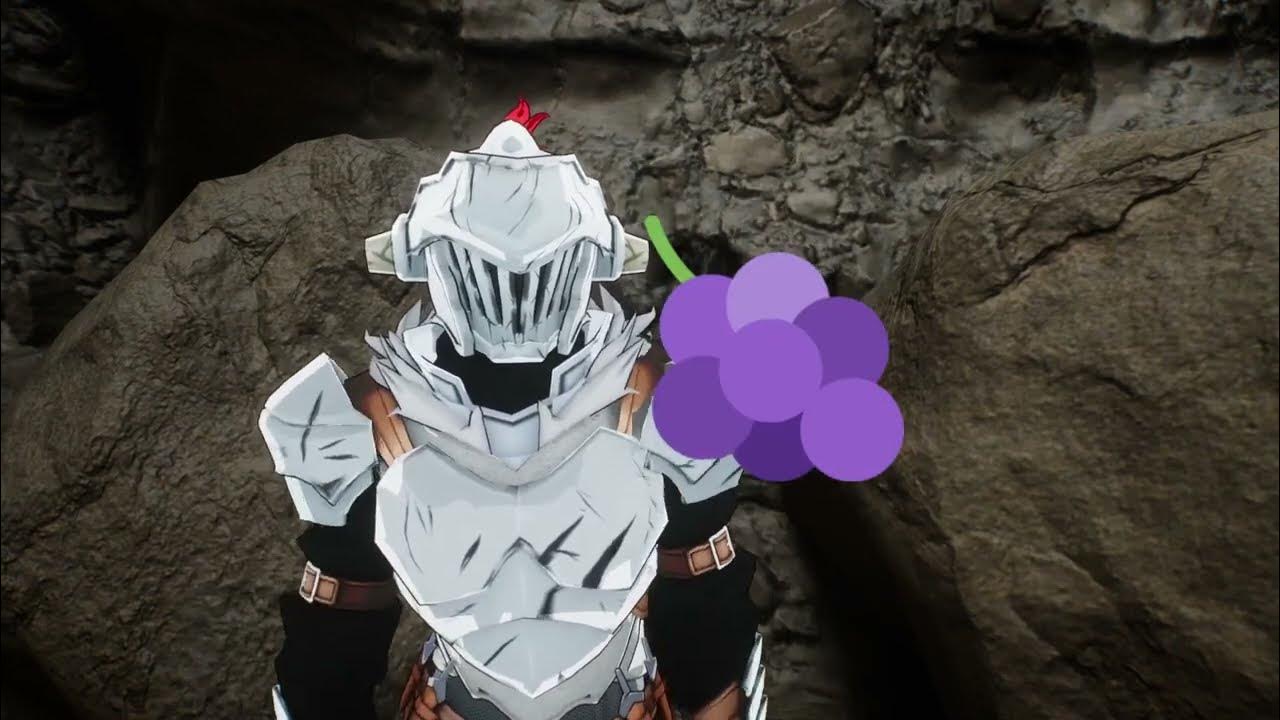Have you ever heard of "Goblin No Suanna"? This term has gained significant attention online, sparking curiosity among enthusiasts of folklore, urban legends, and mythical creatures. Goblin No Suanna, which roughly translates to "goblin's swamp" in Japanese, refers to a concept that blends traditional folklore with modern internet culture. As we delve into this topic, we will uncover its origins, cultural significance, and why it has captured the imagination of so many.
The fascination with Goblin No Suanna lies in its ability to evoke a sense of mystery and wonder. From its roots in Japanese mythology to its modern reinterpretations, this concept has evolved into a multifaceted phenomenon that appeals to a wide audience. Whether you're a fan of folklore, mythology, or just curious about internet trends, this article will provide you with a detailed understanding of Goblin No Suanna.
Throughout this guide, we will explore the origins, cultural impact, and various interpretations of Goblin No Suanna. By the end, you'll have a comprehensive understanding of why this concept has become so popular and how it continues to influence modern culture.
Read also:Diane Alexander A Remarkable Journey Through Fashion And Modeling
Table of Contents
- Origins of Goblin No Suanna
- Cultural Significance of Goblin No Suanna
- Goblin No Suanna in Japanese Mythology
- Modern Interpretations of Goblin No Suanna
- Goblin No Suanna in Internet Culture
- Goblin No Suanna in Art and Literature
- Why Goblin No Suanna Has Become So Popular
- Variations and Related Concepts
- Frequently Asked Questions About Goblin No Suanna
- Conclusion and Final Thoughts
Origins of Goblin No Suanna
Goblin No Suanna traces its roots back to Japanese folklore, where goblins, or "tengu" as they are known in Japan, have long been a part of traditional stories and legends. These mythical creatures are often depicted as mischievous spirits that inhabit forests, mountains, and swamps. The term "Goblin No Suanna" specifically refers to the swampy habitats where these creatures are believed to reside.
In ancient Japanese culture, swamps were seen as mysterious and dangerous places, often associated with supernatural beings. This connection between goblins and swamps has been passed down through generations, influencing modern interpretations of Goblin No Suanna.
Historical Context
The historical context of Goblin No Suanna is deeply rooted in the Shinto and Buddhist traditions of Japan. Tengu, the mythical goblins, were originally considered to be malevolent spirits that caused chaos and destruction. Over time, however, their image softened, and they became protectors of nature and guardians of the forest.
Cultural Significance of Goblin No Suanna
Goblin No Suanna holds significant cultural importance, not only in Japan but also globally. Its appeal lies in its ability to bridge the gap between traditional folklore and modern culture. By blending ancient myths with contemporary themes, Goblin No Suanna has become a symbol of cultural continuity and innovation.
Moreover, the concept of Goblin No Suanna resonates with people who are fascinated by the unknown and the supernatural. It serves as a reminder of the rich cultural heritage that exists in Japan and inspires creativity in various forms of media.
Global Influence
While Goblin No Suanna originated in Japan, its influence has spread worldwide. Fans of mythology and folklore from different cultures have embraced this concept, creating their own interpretations and adaptations. This global phenomenon highlights the universal appeal of Goblin No Suanna and its ability to transcend cultural boundaries.
Read also:Asmongold Gf Unveiling The Life Relationship And Achievements
Goblin No Suanna in Japanese Mythology
In Japanese mythology, Goblin No Suanna is closely linked to the tengu, mythical creatures that are often depicted as bird-like beings with long noses. These goblins are said to possess supernatural powers and are known for their mischievous nature. They are believed to inhabit remote areas such as mountains, forests, and swamps, where they guard the natural world from human interference.
According to legend, tengu were initially feared as malevolent spirits that caused destruction and chaos. However, over time, their image evolved, and they became respected as protectors of nature and guardians of the forest. This transformation reflects the changing attitudes towards supernatural beings in Japanese culture.
Key Characteristics of Tengu
- Long noses or beaks
- Ability to fly
- Mastery of martial arts
- Connection to nature
- Protective of their habitats
Modern Interpretations of Goblin No Suanna
In modern times, Goblin No Suanna has been reinterpreted in various forms of media, including literature, art, and video games. These interpretations often blend traditional folklore with contemporary themes, creating a unique and engaging experience for audiences. The concept of Goblin No Suanna continues to evolve, reflecting the changing attitudes and interests of society.
One popular interpretation of Goblin No Suanna can be found in video games, where goblins are often depicted as playful yet dangerous creatures that players must interact with. These games often incorporate elements of Japanese mythology, providing players with an immersive experience that combines adventure and cultural education.
Examples in Media
- Video games featuring goblins as key characters
- Books and novels exploring the concept of Goblin No Suanna
- Artworks depicting tengu and their swampy habitats
Goblin No Suanna in Internet Culture
The rise of the internet has played a significant role in popularizing Goblin No Suanna. Online communities and social media platforms have become hubs for fans of this concept, where they can share their creations, discuss theories, and connect with like-minded individuals. The internet has allowed Goblin No Suanna to reach a global audience, further cementing its place in popular culture.
One of the reasons Goblin No Suanna has become so popular online is its adaptability. Fans can easily incorporate this concept into their own creative projects, whether it be through fan art, writing, or music. This flexibility has contributed to the widespread adoption of Goblin No Suanna in internet culture.
Online Communities
There are numerous online communities dedicated to Goblin No Suanna, where fans gather to share their work and discuss their interpretations of this phenomenon. These communities provide a platform for creative expression and collaboration, fostering a sense of belonging among members.
Goblin No Suanna in Art and Literature
Art and literature have played a crucial role in shaping the image of Goblin No Suanna. Artists and writers have drawn inspiration from Japanese mythology, creating works that capture the essence of this concept. Through their creations, they have brought Goblin No Suanna to life, allowing audiences to experience its magic and mystery firsthand.
Many artists have produced stunning visuals that depict tengu and their swampy habitats, while writers have crafted compelling narratives that explore the themes of Goblin No Suanna. These works not only entertain but also educate audiences about the rich cultural heritage behind this phenomenon.
Notable Works
- Paintings and illustrations of tengu
- Novels and short stories featuring Goblin No Suanna
- Poetry inspired by Japanese folklore
Why Goblin No Suanna Has Become So Popular
The popularity of Goblin No Suanna can be attributed to several factors. Firstly, its roots in Japanese mythology provide a fascinating backdrop that captivates audiences. Secondly, its adaptability allows fans to reinterpret and reimagine this concept in various ways, ensuring its relevance in modern times. Lastly, the internet has played a pivotal role in spreading awareness and fostering a global community of enthusiasts.
Additionally, Goblin No Suanna appeals to people's innate curiosity about the unknown and the supernatural. Its mysterious nature invites speculation and exploration, making it an ideal subject for creative expression and discussion.
Factors Contributing to Popularity
- Rich cultural heritage
- Adaptability and versatility
- Global reach through the internet
- Appeal to fans of folklore and mythology
Variations and Related Concepts
While Goblin No Suanna is a distinct concept, it shares similarities with other mythical creatures and folklore from around the world. These variations and related concepts provide additional context and depth to the understanding of Goblin No Suanna.
For example, the European concept of goblins and the Native American legends of forest spirits share common themes with Goblin No Suanna. By exploring these related concepts, fans can gain a broader perspective on the universal appeal of mythical creatures and their habitats.
Comparisons with Other Mythologies
- Goblins in European folklore
- Forest spirits in Native American legends
- Water deities in African mythology
Frequently Asked Questions About Goblin No Suanna
Here are some common questions about Goblin No Suanna and their answers:
- What is Goblin No Suanna? Goblin No Suanna refers to a concept that combines Japanese folklore with modern internet culture, focusing on goblins and their swampy habitats.
- Where does Goblin No Suanna originate from? It originates from Japanese mythology, specifically the legends of tengu, mythical creatures that inhabit forests and mountains.
- Why has Goblin No Suanna become so popular? Its popularity can be attributed to its rich cultural heritage, adaptability, and global reach through the internet.
Conclusion and Final Thoughts
Goblin No Suanna is a fascinating phenomenon that bridges the gap between traditional folklore and modern culture. Its origins in Japanese mythology, combined with its adaptability and global reach, have made it a beloved concept among fans of mythology and folklore worldwide.
As we have explored throughout this article, Goblin No Suanna offers a unique window into the rich cultural heritage of Japan while inspiring creativity and imagination in its fans. Whether you're a seasoned enthusiast or a curious newcomer, there is much to discover and appreciate about this captivating concept.
We invite you to share your thoughts and experiences with Goblin No Suanna in the comments below. Feel free to explore our other articles for more insights into mythology, folklore, and cultural phenomena. Together, let's continue to celebrate the magic and mystery of Goblin No Suanna!


